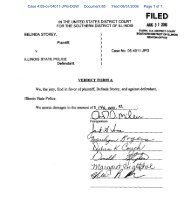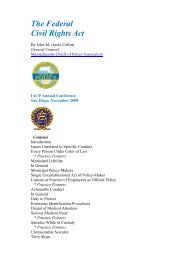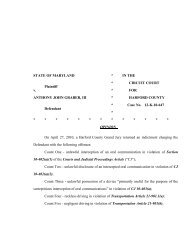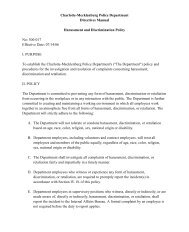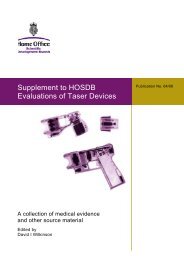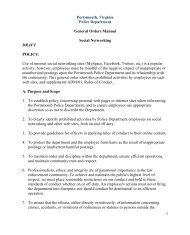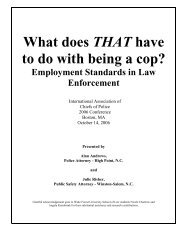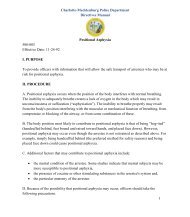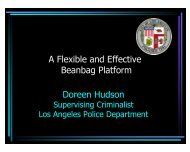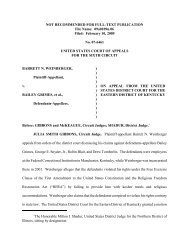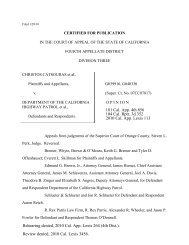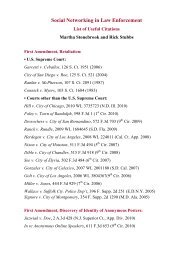Management Rights - AELE's Home Page
Management Rights - AELE's Home Page
Management Rights - AELE's Home Page
You also want an ePaper? Increase the reach of your titles
YUMPU automatically turns print PDFs into web optimized ePapers that Google loves.
Workplace Rules and Practices 13-9<br />
anti-adornment/uniform policy in a consistent<br />
and nondiscriminatory manner, a special<br />
circumstance exists, as a matter of law, which<br />
justifies the banning of union buttons" (emphasis<br />
added). 72<br />
"Special circumstances" rarely, if ever, are found in the absence of a<br />
comprehensive ban on all nonstandard adornments. See, e.g., Dighton<br />
School Comm., 8 M.L.C. at 1305 ("We are further convinced that no<br />
special circumstances exist to prohibit [union] buttons by the fact that<br />
other buttons were worn ... without ... interference or comment by the<br />
school administration. A rule which is enforced only against union<br />
buttons demonstrates the lack of any truly legitimate purpose for the<br />
rule"). 73 The record in this case, however, discloses nothing remotely<br />
resembling a comprehensive prohibition.<br />
We agree with the sheriff that "the need for discipline, uniformity and an<br />
absolutely impartial appearance exists at the Jail." People with violent<br />
tendencies live at the jail. A paramilitary organization and command<br />
structure are essential for the safety of inmates and correction officers<br />
alike. But the long period before April 22, 1997, during which the sheriff<br />
had no policy prohibiting pins, and the fact that his April 22 edict appears<br />
to have fallen with particular force on union pins, supports the<br />
commission's conclusion that no special circumstances connected to the<br />
jail's mission, command structure, need for discipline or other functional<br />
requirement justified the sheriff's unilateral prohibition of the union<br />
buttons employees presumptively were entitled to wear. 74 Therefore, the<br />
commission's conclusion that the April 22 directive, insofar as it affected<br />
union buttons, violated G.L. c. 150E, §§ 10(a)(1) and 10(a) (5), was<br />
supported by substantial evidence and did not amount to an error of law.<br />
We do not preclude the possibility that circumstances may change over<br />
time in a way that enables the sheriff to meet his burden at some point in<br />
the future. 75<br />
In light of the foregoing, paragraphs 1(a), 1(b), 2(a), and 2(b) of the<br />
commission's order are reversed insofar as they pertain to badges, pins,<br />
and any nonstandard uniform attire other than pins and badges<br />
containing union insignia. The commission shall modify the "Notice to<br />
Employees" referenced in paragraph 2(c) of its order so that it is consistent<br />
with this opinion. In all other respects, the commission's order is affirmed.<br />
So ordered.<br />
The Oxford Police Chief could have banned all non-department-supplied<br />
pins and insignia on oficers’ uniforms. However, by alowing DARE<br />
patches and “guardian angel” pins, for example, and banning any union<br />
pins, the town violated the law by discriminating against the union. 76<br />
Massachusetts Municipal Police Training Committee



